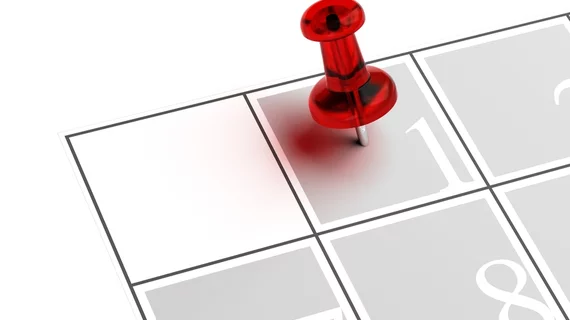University of Cincinnati Health is sharing some key lessons learned after the academic medical system was forced to systematically reschedule more than 30,000 imaging appointments to counter the COVID crisis.
Clear communication has proven crucial and that will only continue as the two-hospital system, with five freestanding imaging centers, looks to recover, experts wrote Tuesday in JACR. UC Health is now posting messages on social media about the steps it is taking to ensure patient safety, and residents are contacting customers about the measures implemented at its imaging facilities.
“As the number of COVID cases in our region are hopefully nearing a plateau, we are now actively working on a recovery/reentry plan,” Achala Vagal, MD, with the UC Health Department of Radiology, and more than a dozen co-authors wrote May 19. “We understand that how we operationalize our recovery, including patient experience during reentry, is critical for our stabilization,” the team added later.
UC Health formed a rescheduling team to champion this effort, guided by the vice chair of operations, with input from numerous others in the department. They conducted “daily virtual huddles” to discuss their strategies and how to track issues, tackle any problems in real time, and further refine the process.
Those involved devised a tiered priority system to work through thousands of exams that could potentially be delayed with minimal clinical impact. Safety and the need for information mandated a “detailed review” of patients’ electronic medical records, the team noted.
Communication has proven tantamount during the process, Vagal and colleagues emphasized. They’ve disseminated details about their rescheduling plan “widely and frequently” across the department, looking to gather feedback. Section chiefs have relayed information from the daily huddles to section members; vice chairs of education and research passed the message to residents; and the imaging director has held daily get-togethers with technologists.
At one point, UC Health decided to reduce the number of imaging facilities open down to just its main hospital campus, which has the highest number of scanners with the greatest ease of sanitation. All five of its freestanding centers were temporarily closed in a bid to reduce the number of technologists on site, and stagger shifts to decrease exposure.
All told, UC has rescheduled 30,000 studies up to this point. They’ve witnessed a “significant” overall decrease in volume, the authors noted, at about 53% when compared to the same period in 2020. The largest reduction was seen on the outpatient side (72%), with dips also experienced on the inpatient side (41%) and emergency department (49%).
Along with the importance of communication, Vagal and co-authors also emphasized the need to be agile and flexible when responding to such challenges in the future.
“There was lack of institutional nimbleness due to different health system information networks, resulting in additional steps,” the team noted. “We learned that information systems need to be proactively consolidated and linked within an institution to facilitate communication. The EMR searches were time-intensive, highlighting that accurate, and easily accessible clinical information is a requirement for efficient and medically sound triage decisions,” they added.

